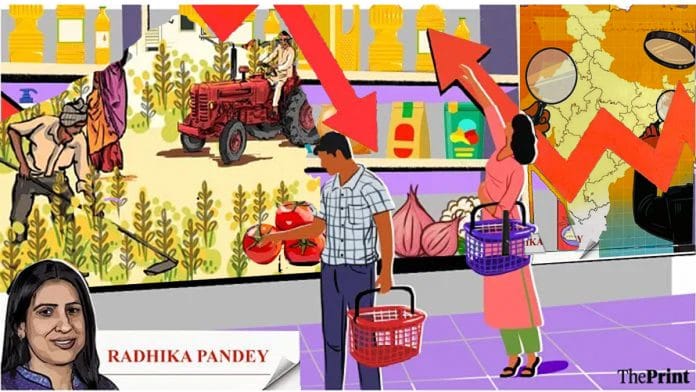Last week, the National Sample Survey Office (NSSO) at the statistics ministry released the detailed report on the 2022-23 Household Consumer Expenditure Survey. In February this year, NSSO had released a factsheet with the key findings from the survey.
The report provides detailed insights on consumption expenditure at state and all-India level. It also presents a disaggregated view of the consumption expenditure across different categories. Released after a gap of 11 years, it helps in understanding the variation in consumption patterns and standards of living across states and types of households.
The key variable of interest is the Monthly Per Capita Consumption Expenditure (MPCE), which is the total value of monthly consumption of goods and services of households divided by the number of members of the household. Here are some key takeaways from the report.
Gap between urban & rural consumption expenditure narrowing
In nominal terms, the average MPCE for rural India in 2022-23 was Rs 3,773. For urban India, it was Rs 6,459 — 71 percent more than the average rural consumption expenditure.
Encouragingly, the gap between the average urban and rural MPCE is seen to be narrowing since the previous round of the survey. In 2004-05, urban MPCE exceeded rural MPCE by more than 90 percent.
However, consumption inequality persists and is more pronounced in urban areas, where the consumption expenditure of the top five percent of the population is 10.4 times higher than that of the bottom five percent. The corresponding gap between top and bottom five percent in rural areas is 7.6 times.
Variation in consumption expenditure across and within states
There are visible differences in consumption expenditure across states as well as between rural and urban regions within a state.
Among the major states, Chhattisgarh features as the one with the lowest monthly per capita consumption expenditure in 2022-23. The state has the lowest consumption expenditure in both rural areas at Rs 2,466 and urban areas at Rs 4,483.
Kerala has the highest consumption expenditure in rural areas (Rs 5,924), while Telangana has the highest consumption spending in urban regions (Rs 8,158).
There are variations in urban-rural gaps in consumption spending in states. In six states, the gap is more than the all-India average of 71 percent.
In Chhattisgarh, the state with the lowest average MPCE, the gap is the highest at 82 percent. In Assam, Gujarat, Jharkhand and Karnataka, urban consumption spending exceeded its rural counterpart by more than the national average.
In contrast, the urban-rural gap, among major states, is the lowest in Kerala, followed by Punjab.
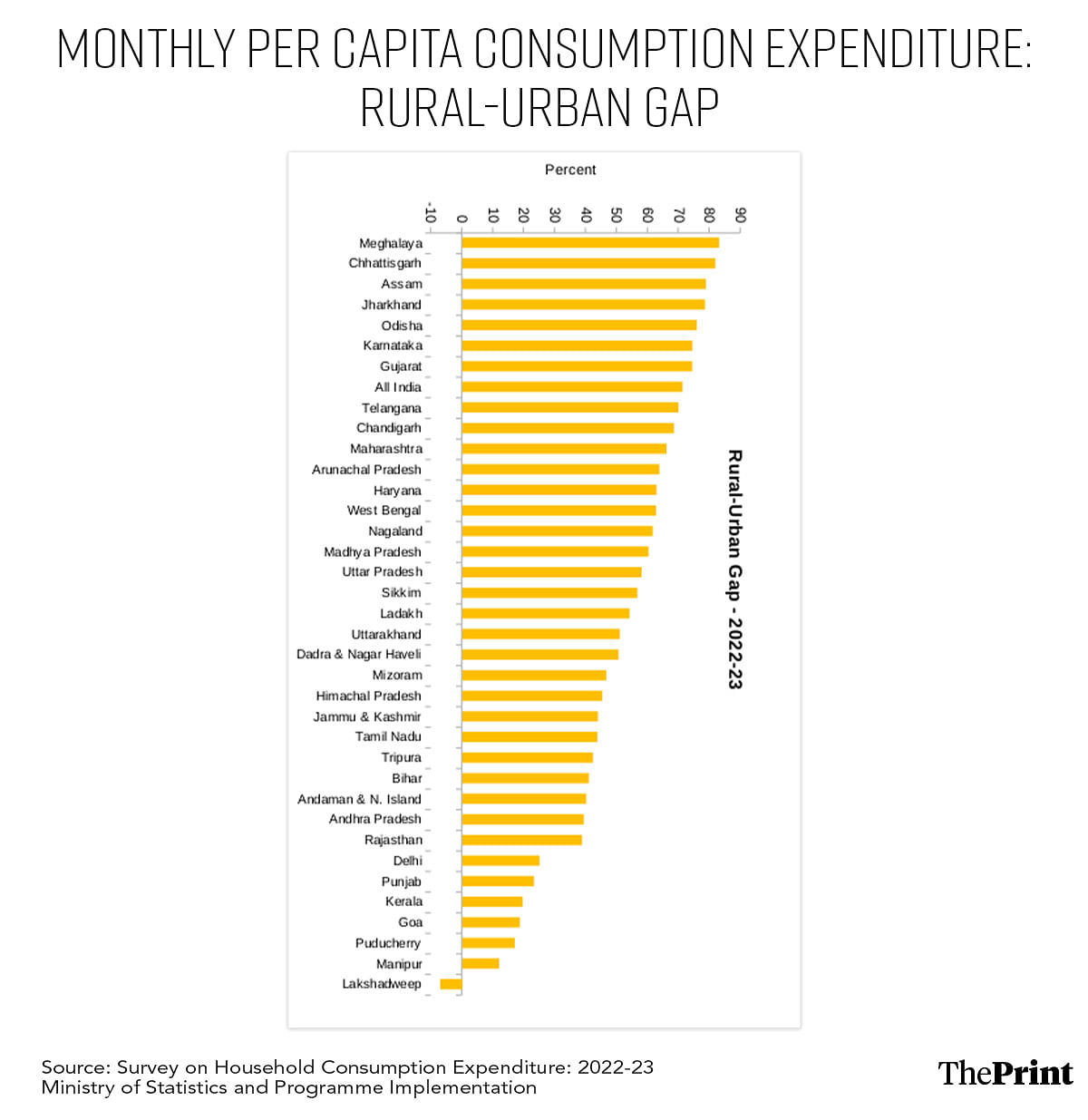
Interestingly, two major southern states — Karnataka and Tamil Nadu — differ vastly in terms of the rural-urban consumption gap. In Karnataka, it is 74 percent, while in Tamil Nadu, the gap is only 44 percent.
Prominence of food in consumption basket, diminishing share of cereals
In rural India, the share of food in the consumption basket has fallen from almost 60 percent in 1999-2000 to 46 percent in 2022-23. In urban India, it has dropped from 48.1 percent in 1999-2000 to 39 percent in 2022-23. Simultaneously, the share of non-food items has witnessed a rise in both rural and urban areas.
Among the food items, the share of beverages, refreshments and processed foods, and milk and milk products, is the highest in both rural and urban areas.
A comparison of the last few surveys reveals distinct changes in the consumption patterns of rural and urban households. The last three rounds show a consistent decline in the share of cereals and vegetables, and a rise in the share of milk and milk products, and beverages and processed foods.
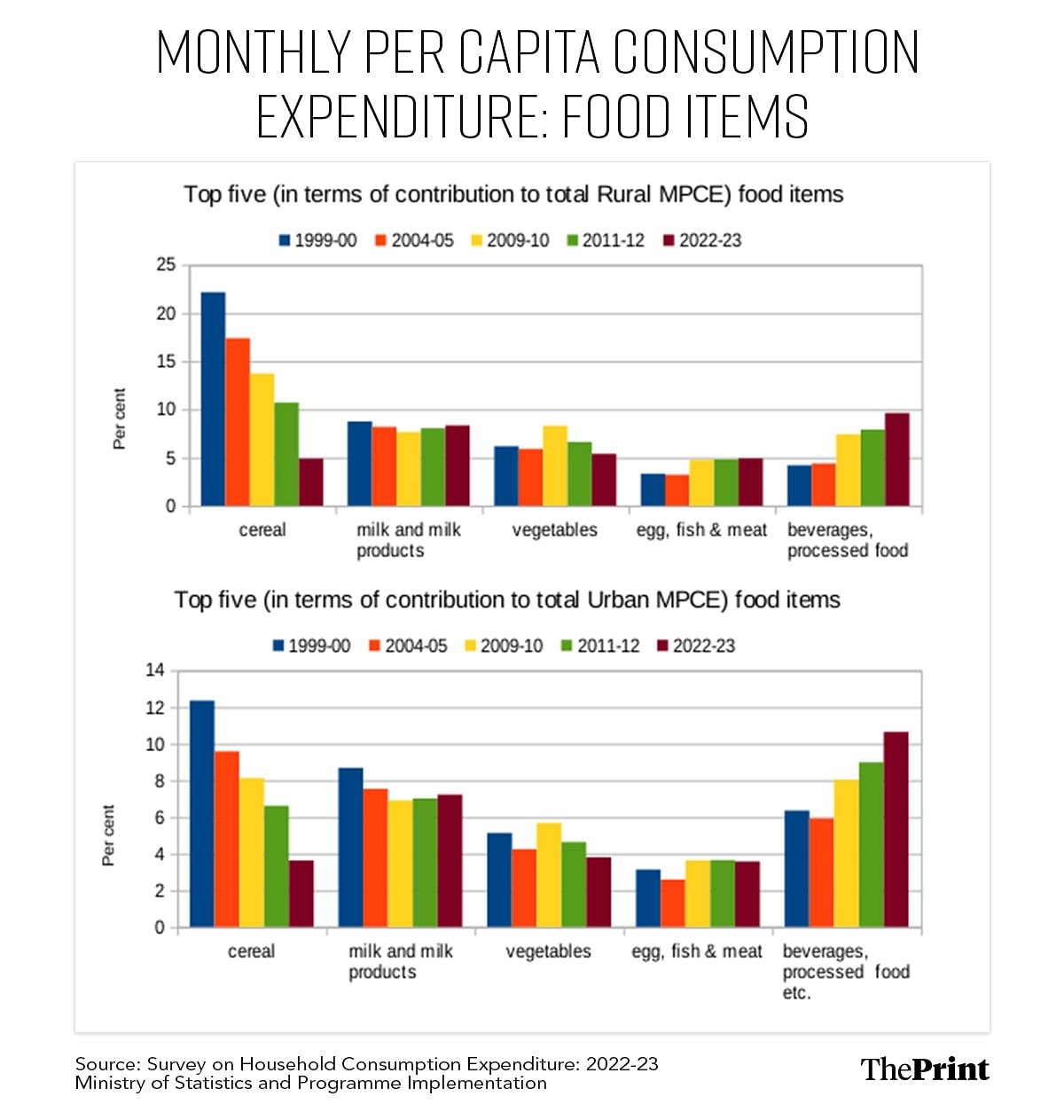
Trends in consumption of non-food items
The share of non-food items in urban India’s consumption expenditure is 61 percent in 2022-23, seven percent more than that of rural India.
Conveyance, which includes railway fare, airfare, petrol and diesel for vehicle and other conveyance expenditure, has the largest share amongst spending on non-food items in both rural and urban areas. Durable goods have the second largest share in rural and urban India.
Comparison of the last few rounds of surveys indicates that the share of conveyance and durable goods has witnessed a consistent rise, while the share of fuel and light has seen a decline in both rural and urban India. In urban areas, the share of rent in non-food consumption spending has also seen a rise.
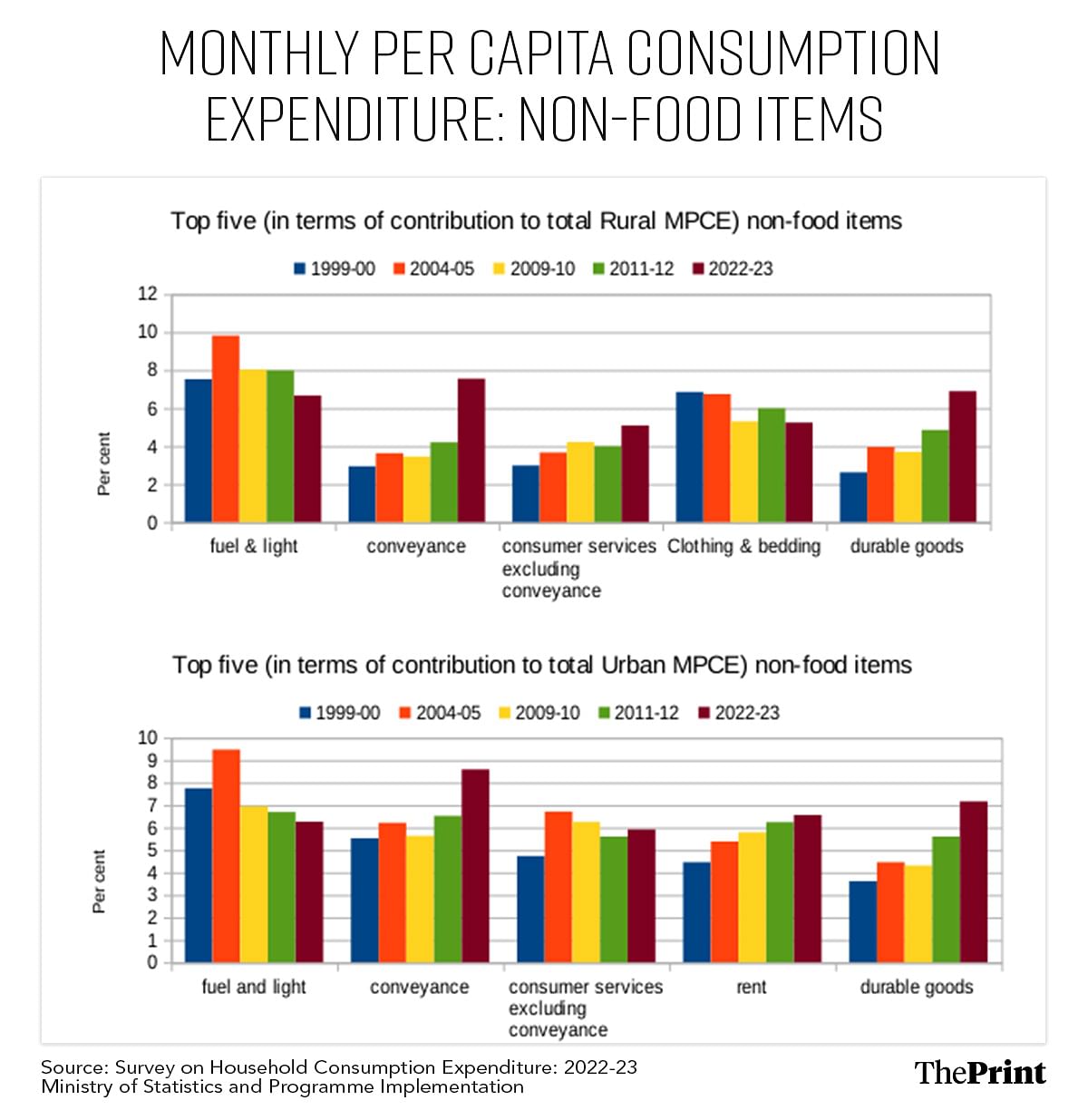
State-wise variation in expenditure on food
While the share of food in total consumption expenditure is 46 percent in rural India, in six states/Union Territories, food still constitutes more than 50 percent of the overall MPCE. These are Ladakh (59.2 percent), Assam (54.3 percent), Bihar (53.5 percent), West Bengal (51.1 percent), Arunachal Pradesh (50.8 percent) and Sikkim (50.6 percent).
The share of food in rural Kerala (39.1 percent) is the lowest among all states/ UTs. Notably, in Bihar and West Bengal, the larger share of food in consumption spending is on account of higher spending on cereals.
There are inter-state variations in expenditure for different food items. Most of the states spend the bulk of their food-related expenditure on beverages and processed foods. In a handful of states, households spend a larger share of their consumption expenditure on milk and milk products.
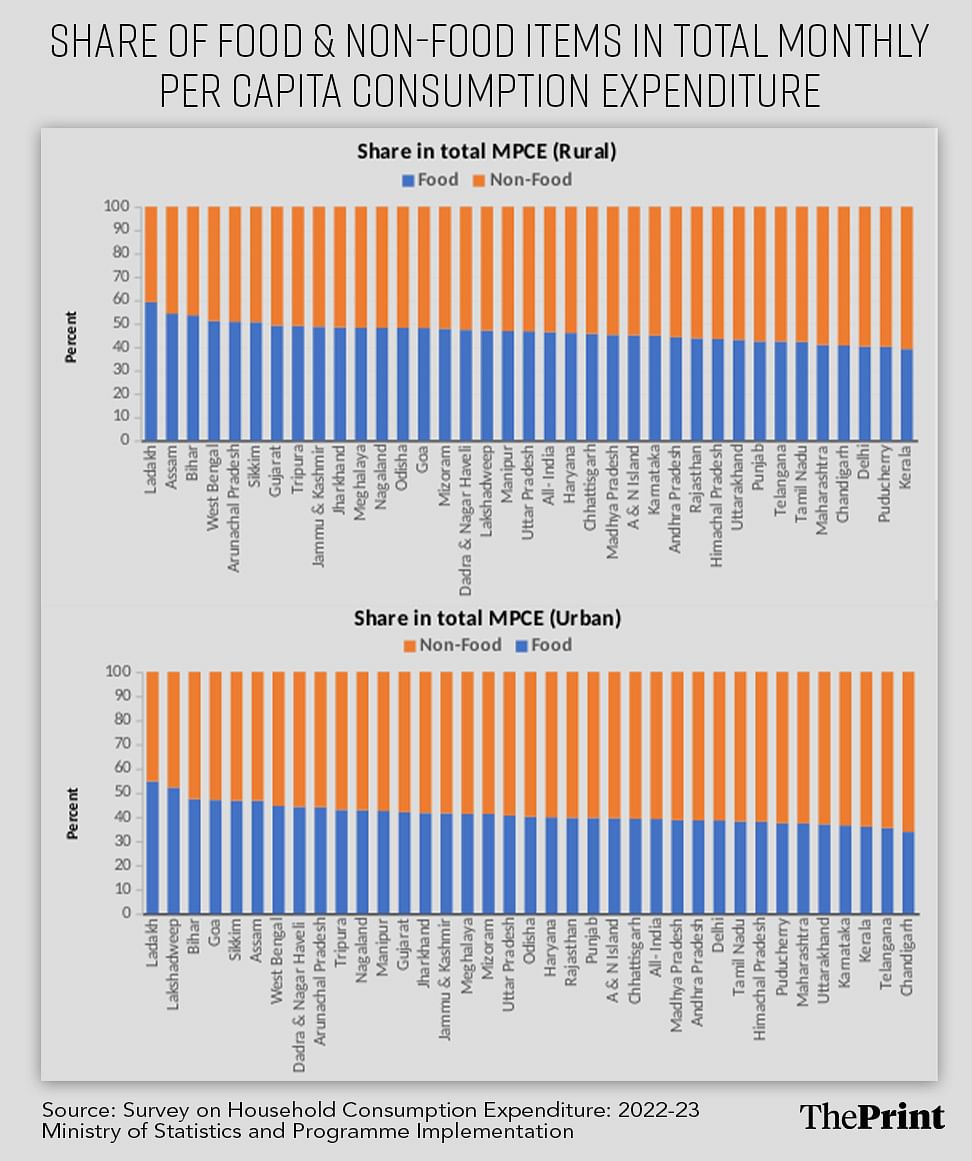
Inequality in consumption expenditure
From the viewpoint of policy intervention, a useful datapoint to consider is the difference in consumption expenditure of persons categorised into deciles or fractiles, based on their monthly consumption expenditure.
The gap in the consumption expenditure between the top and bottom five percent of population is the widest in rural Rajasthan and in urban Haryana.
Radhika Pandey is associate professor and Rachna Sharma is a fellow at National Institute of Public Finance and Policy. Views are personal.
(Edited by Mannat Chugh)
Also Read: Indian banking sector’s boom continues, but low deposit rates for some banks point to future risks



